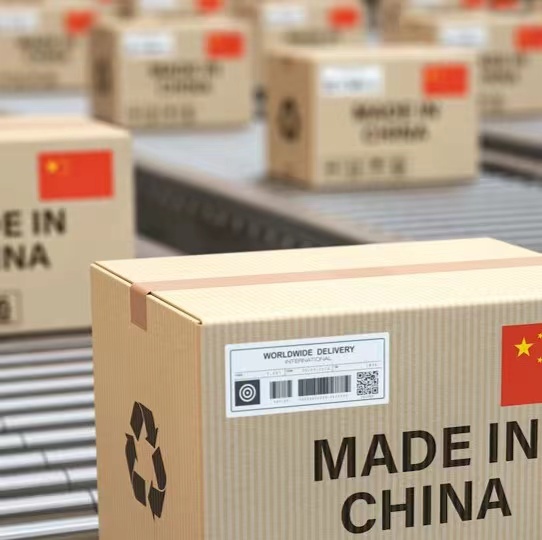Mastering Communication with Chinese Suppliers: Strategies for Success in Foreign Trade
SOURCING AGENT
8/10/20243 min read


Effective communication with Chinese suppliers is a crucial aspect of successful foreign trade procurement. This process can be complex due to language barriers, cultural differences, and varying business practices. However, mastering these interactions can lead to beneficial partnerships and smoother transactions. In this blog, we'll explore key strategies to enhance your communication with Chinese suppliers, ensuring a more efficient and productive sourcing experience.
Understanding the Cultural Context
Embrace Chinese Business Etiquette
Understanding and respecting Chinese business culture is essential. In China, business relationships are often built on trust and mutual respect. It’s important to:
Be Polite and Formal: Address your Chinese counterparts using their formal titles and full names. Formality conveys respect and professionalism.
Understand the Importance of Guanxi: Guanxi, or personal connections, plays a significant role in Chinese business. Building strong relationships can greatly influence your business dealings.
Be Patient: Chinese business culture often values patience. Avoid rushing decisions and give time for relationships to develop.
Communicate Clearly and Directly
Be Explicit and Detailed: Clearly outline your requirements, specifications, and expectations. Avoid ambiguity to minimize misunderstandings.
Use Simple Language: While English is commonly used in international business, using simple, clear language helps avoid confusion.
Confirm Understanding: After communicating, summarize key points and ask for confirmation to ensure mutual understanding.
Navigating Language Barriers
Use Professional Translation Services
For complex or technical documents, consider using professional translation services. This ensures accuracy and clarity in all communications.
Leverage Technology
Translation Apps: Utilize translation apps for quick, on-the-go translations. While not perfect, they can aid in basic communication.
Translation Software: Use specialized software for translating detailed documents or emails.
Verify Translations
Always verify important translations with native speakers or professionals to ensure accuracy and avoid potential errors.
Establishing Clear Expectations
Define Product Specifications
Detailed Descriptions: Provide detailed product descriptions, including specifications, quality standards, and compliance requirements.
Visual Aids: Use diagrams, photos, or samples to illustrate your requirements clearly.
Set Clear Terms
Payment Terms: Agree on payment terms upfront to avoid confusion. Clearly outline the payment method, schedule, and currency.
Delivery Schedules: Define delivery schedules, including deadlines and shipping methods, to align expectations.
Draft Comprehensive Agreements
Contracts: Draft detailed contracts that outline all aspects of the transaction, including quality standards, payment terms, and dispute resolution procedures.
Service Level Agreements (SLAs): Establish SLAs to ensure the supplier meets performance and quality standards.
Building Strong Relationships
Engage in Regular Communication
Frequent Updates: Maintain regular communication to stay updated on progress and address any issues promptly.
Build Rapport: Take time to get to know your suppliers. Building rapport can lead to better cooperation and smoother transactions.
Visit Suppliers
Factory Visits: If possible, visit the supplier’s factory. This allows you to inspect their facilities, verify their capabilities, and build a stronger relationship.
Attend Trade Shows: Participate in trade shows to meet suppliers in person and explore new opportunities.
Addressing and Resolving Issues
Handle Disputes Professionally
Remain Calm and Professional: Address issues calmly and professionally. Focus on finding solutions rather than placing blame.
Document Issues: Keep detailed records of any issues and communications related to them. This documentation can be crucial for resolving disputes.
Implement Quality Control Measures
Inspections: Conduct regular inspections of goods before shipment to ensure they meet your quality standards.
Feedback Loops: Provide feedback to suppliers on product quality and service to help them improve and align with your expectations.
Leveraging Technology and Tools
Utilize E-Procurement Platforms
Online Platforms: Use e-procurement platforms to streamline the sourcing process, manage orders, and track shipments efficiently.
Implement Supplier Management Software
Software Solutions: Employ supplier management software to monitor supplier performance, manage contracts, and analyze data for better decision-making.
Track Shipments and Orders
Real-Time Tracking: Use tracking tools to monitor the status of your shipments and orders. This helps manage expectations and address delays promptly.
Enhancing Negotiation Skills
Prepare Thoroughly
Research: Conduct thorough research on market prices, supplier capabilities, and industry standards before negotiations.
Know Your Goals: Clearly define your goals and objectives for the negotiation process.
Be Flexible and Open-Minded
Flexible Terms: Be open to negotiating terms and conditions. Flexibility can lead to mutually beneficial agreements.
Listen Actively: Listen to the supplier’s needs and concerns. Understanding their perspective can help find common ground.
Build Win-Win Solutions
Seek Mutual Benefits: Aim for solutions that benefit both parties. A win-win approach fosters long-term partnerships and cooperation.
Negotiate Fairly: Strive for fairness in negotiations. Building a positive relationship with suppliers is key to long-term success.
Conclusion
Effectively communicating with Chinese suppliers is a vital aspect of successful foreign trade procurement. By understanding cultural nuances, overcoming language barriers, setting clear expectations, building strong relationships, addressing issues professionally, leveraging technology, and enhancing negotiation skills, you can foster successful and productive partnerships. Implementing these strategies will help streamline your sourcing process and contribute to the overall success of your business ventures.


